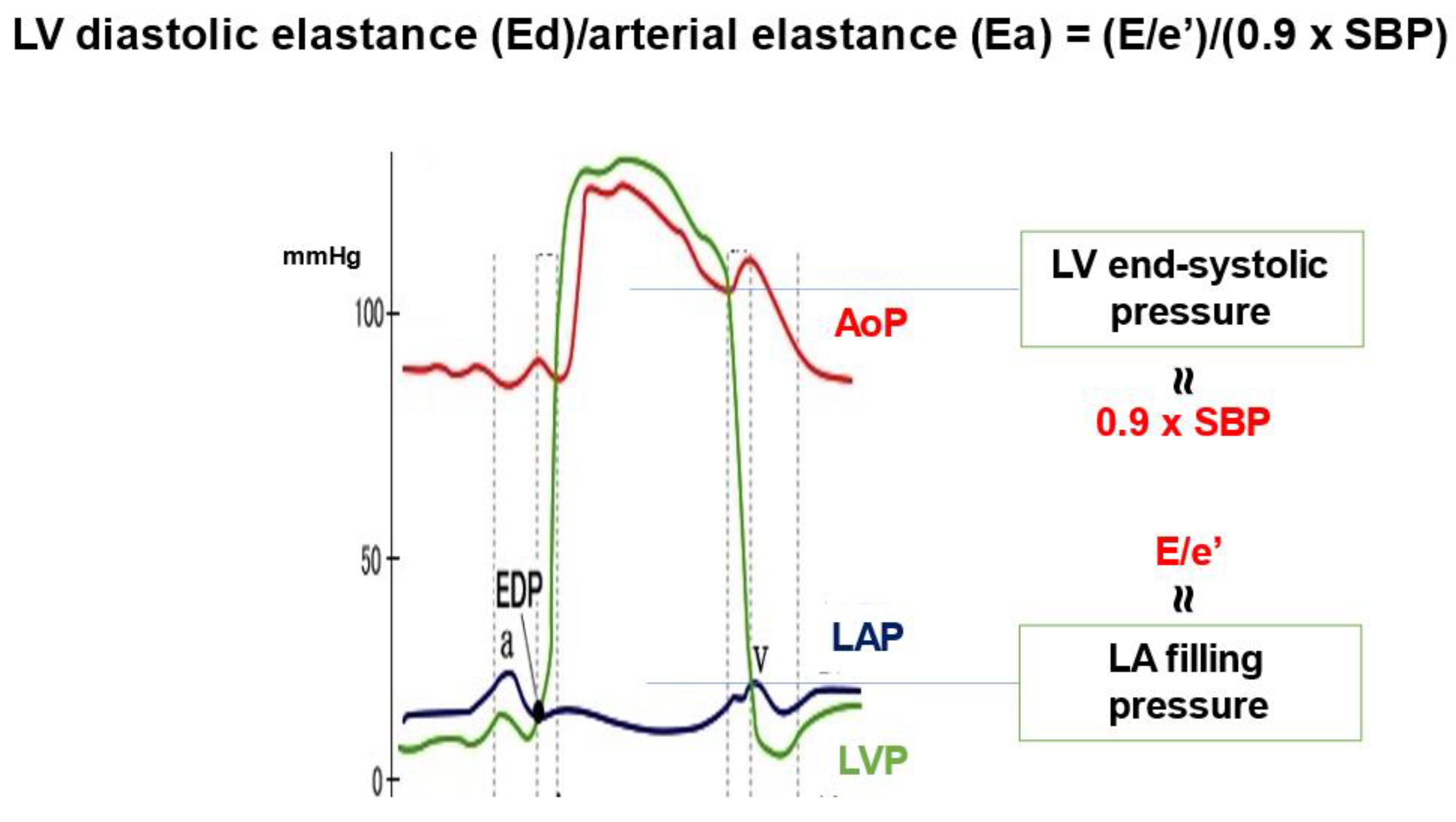Left-Side Pressure Index for All-Cause Mortality in Older Adults with HFpEF: Diagnostic Potential for HFpEF and Possible View for HFrEF
Abstract
Funding
Institutional Review Board Statement
Informed Consent Statement
Data Availability Statement
Conflicts of Interest
References
- Anker, S.D.; Butler, J.; Filippatos, G.; Ferreira, J.P.; Bocchi, E.; Böhm, M.; Brunner–La Rocca, H.-P.; Choi, D.-J.; Chopra, V.; Chuquiure-Valenzuela, E.; et al. Empagliflozin in Heart Failure with a Preserved Ejection Fraction. N. Engl. J. Med. 2021, 385, 1451–1461. [Google Scholar] [CrossRef]
- Nassif, M.E.; Windsor, S.L.; Borlaug, B.A.; Kitzman, D.W.; Shah, S.J.; Tang, F.; Khariton, Y.; Malik, A.O.; Khumri, T.; Umpierrez, G.; et al. The SGLT2 inhibitor dapagliflozin in heart failure with preserved ejection fraction: A multicenter randomized trial. Nat. Med. 2021, 27, 1954–1960. [Google Scholar] [CrossRef]
- Yang, D.; Zhang, Y.; Yan, J.; Liu, M.; An, F. SGLT-2 inhibitors on prognosis and health-related quality of life in patients with heart failure and preserved ejection fraction: A systematic review and meta-analysis. Front. Cardiovasc. Med. 2022, 9, 942125. [Google Scholar] [CrossRef]
- Jhund, P.S.; Kondo, T.; Butt, J.H.; Docherty, K.F.; Claggett, B.L.; Desai, A.S.; Vaduganathan, M.; Gasparyan, S.B.; Bengtsson, O.; Lindholm, D.; et al. Dapagliflozin across the range of ejection fraction in patients with heart failure: A patient-level, pooled meta-analysis of DAPA-HF and DELIVER. Nat. Med. 2022, 28, 1956–1964. [Google Scholar] [CrossRef]
- Vaduganathan, M.; Docherty, K.F.; Claggett, B.L.; Jhund, P.S.; A de Boer, R.; Hernandez, A.F.; E Inzucchi, S.; Kosiborod, M.N.; Lam, C.S.P.; Martinez, F.; et al. SGLT-2 inhibitors in patients with heart failure: A comprehensive meta-analysis of five randomised controlled trials. Lancet 2022, 400, 757–767. [Google Scholar] [CrossRef]
- Hoshida, S.; Shinoda, Y.; Ikeoka, K.; Fukuoka, H.; Inui, H.; Watanabe, T. Age- and sex-related differences in diastolic function and cardiac dimensions in a hypertensive population. ESC Heart Fail. 2016, 3, 270–277. [Google Scholar] [CrossRef] [PubMed]
- Hoshida, S.; Watanabe, T.; Shinoda, Y.; Minamisaka, T.; Fukuoka, H.; Inui, H.; Ueno, K.; Yamada, T.; Uematsu, M.; Yasumura, Y.; et al. Considerable scatter in the relationship between left atrial volume and pressure in heart failure with preserved left ventricular ejection fraction. Sci. Rep. 2020, 10, 1–8. [Google Scholar] [CrossRef] [PubMed]
- Hoshida, S.; Tachibana, K.; Masunaga, N.; Shinoda, Y.; Minamisaka, T.; Inui, H.; Ueno, K.; Seo, M.; Yano, M.; Hayashi, T.; et al. Impact of Sex in Left Atrial Indices for Prognosis of Heart Failure with Preserved Ejection Fraction. J. Clin. Med. 2022, 11, 5910. [Google Scholar] [CrossRef] [PubMed]
- Hoshida, S.; Tachibana, K.; Shinoda, Y.; Minamisaka, T.; Seo, M.; Yano, M.; Hayashi, T.; Nakagawa, A.; Nakagawa, Y.; Tamaki, S.; et al. Relation of left atrial overload indices with prognostic endpoints in heart failure and preserved ejection fraction. ESC Heart Fail. 2022, 9, 1784–1791. [Google Scholar] [CrossRef]
- Hoshida, S.; Tachibana, K.; Shinoda, Y.; Minamisaka, T.; Yamada, T.; Higuchi, Y.; Nakagawa, Y.; Abe, H.; Fuji, H.; Yasumura, Y.; et al. Left atrial pressure overload and prognosis in elderly patients with heart failure and preserved ejection fraction: A prospective multicenter observational study. BMJ Open 2021, 11, e044605. [Google Scholar] [CrossRef] [PubMed]
- Wdowiak-Okrojek, K.; Wejner-Mik, P.; Kasprzak, J.D.; Lipiec, P. Recovery of regional systolic and diastolic myocardial function after acute myocardial infarction evaluated by two-dimensional speckle tracking echocardiography. Clin. Physiol. Funct. Imaging 2019, 39, 177–181. [Google Scholar] [CrossRef] [PubMed]

Disclaimer/Publisher’s Note: The statements, opinions and data contained in all publications are solely those of the individual author(s) and contributor(s) and not of MDPI and/or the editor(s). MDPI and/or the editor(s) disclaim responsibility for any injury to people or property resulting from any ideas, methods, instructions or products referred to in the content. |
© 2023 by the author. Licensee MDPI, Basel, Switzerland. This article is an open access article distributed under the terms and conditions of the Creative Commons Attribution (CC BY) license (https://creativecommons.org/licenses/by/4.0/).
Share and Cite
Hoshida, S. Left-Side Pressure Index for All-Cause Mortality in Older Adults with HFpEF: Diagnostic Potential for HFpEF and Possible View for HFrEF. J. Clin. Med. 2023, 12, 802. https://doi.org/10.3390/jcm12030802
Hoshida S. Left-Side Pressure Index for All-Cause Mortality in Older Adults with HFpEF: Diagnostic Potential for HFpEF and Possible View for HFrEF. Journal of Clinical Medicine. 2023; 12(3):802. https://doi.org/10.3390/jcm12030802
Chicago/Turabian StyleHoshida, Shiro. 2023. "Left-Side Pressure Index for All-Cause Mortality in Older Adults with HFpEF: Diagnostic Potential for HFpEF and Possible View for HFrEF" Journal of Clinical Medicine 12, no. 3: 802. https://doi.org/10.3390/jcm12030802
APA StyleHoshida, S. (2023). Left-Side Pressure Index for All-Cause Mortality in Older Adults with HFpEF: Diagnostic Potential for HFpEF and Possible View for HFrEF. Journal of Clinical Medicine, 12(3), 802. https://doi.org/10.3390/jcm12030802




